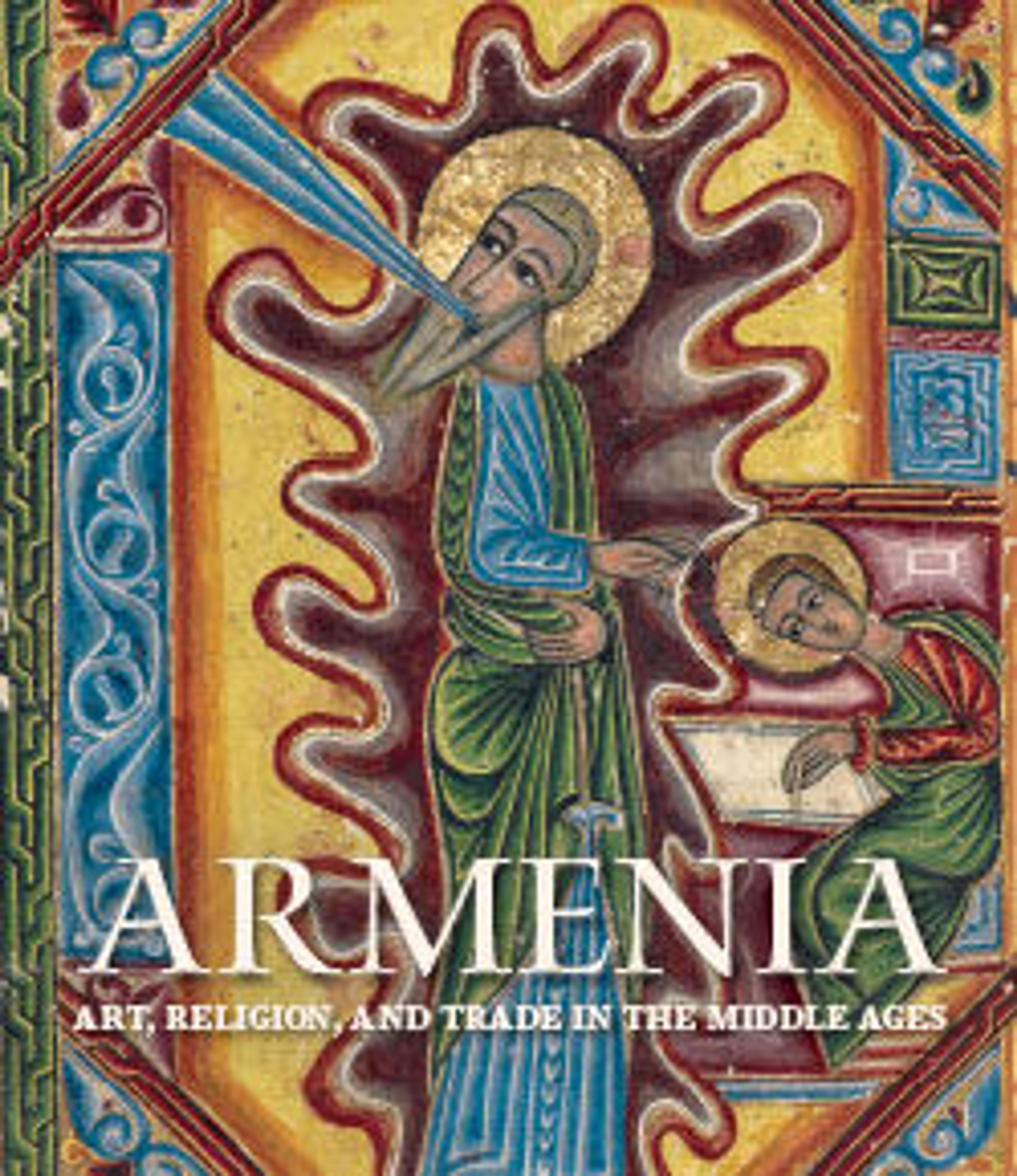Kalamkari Hanging with Figures in an Architectural Setting
Kalamkari, a multistep process for dying textiles by applying each color with a stylus (kalam) or by using resists, is a specialty of the Deccan region of India. Although the region produced many types of dyed textiles for export to Europe and Southeast Asia between the seventeenth and nineteenth centuries, this hanging is one of a small group decorated with multiple figures, made only in the early 1600s. This particular hanging was once attached to several other similar panels, and was probably used as a backdrop for royal ceremonies. Later the hanging was cut down and borders were added from two other textiles.
Artwork Details
- Title: Kalamkari Hanging with Figures in an Architectural Setting
- Date: ca. 1640–50
- Geography: Attributed to India, Deccan
- Medium: Cotton; plain weave, mordant-painted and dyed, resist-dyed
- Dimensions: Textile: L. 100 in. (254 cm)
W. 78 in. (198.1 cm)
Mount:
L. 107 1/8 in. (272.1 cm)
W. 85 in. (215.9 cm)
D. 2 1/2 inches (6.4 kg)
Weight: 208 lbs (94.3 kg) - Classification: Textiles-Painted and/or Printed
- Credit Line: Gift of Mrs. Albert Blum, 1920
- Object Number: 20.79
- Curatorial Department: Islamic Art
Audio
6670. Overview: Kalamkari Textiles
0:00
0:00
We're sorry, the transcript for this audio track is not available at this time. Please email info@metmuseum.org to request a transcript for this track.
More Artwork
Research Resources
The Met provides unparalleled resources for research and welcomes an international community of students and scholars. The Met's Open Access API is where creators and researchers can connect to the The Met collection. Open Access data and public domain images are available for unrestricted commercial and noncommercial use without permission or fee.
To request images under copyright and other restrictions, please use this Image Request form.
Feedback
We continue to research and examine historical and cultural context for objects in The Met collection. If you have comments or questions about this object record, please complete and submit this form. The Museum looks forward to receiving your comments.
